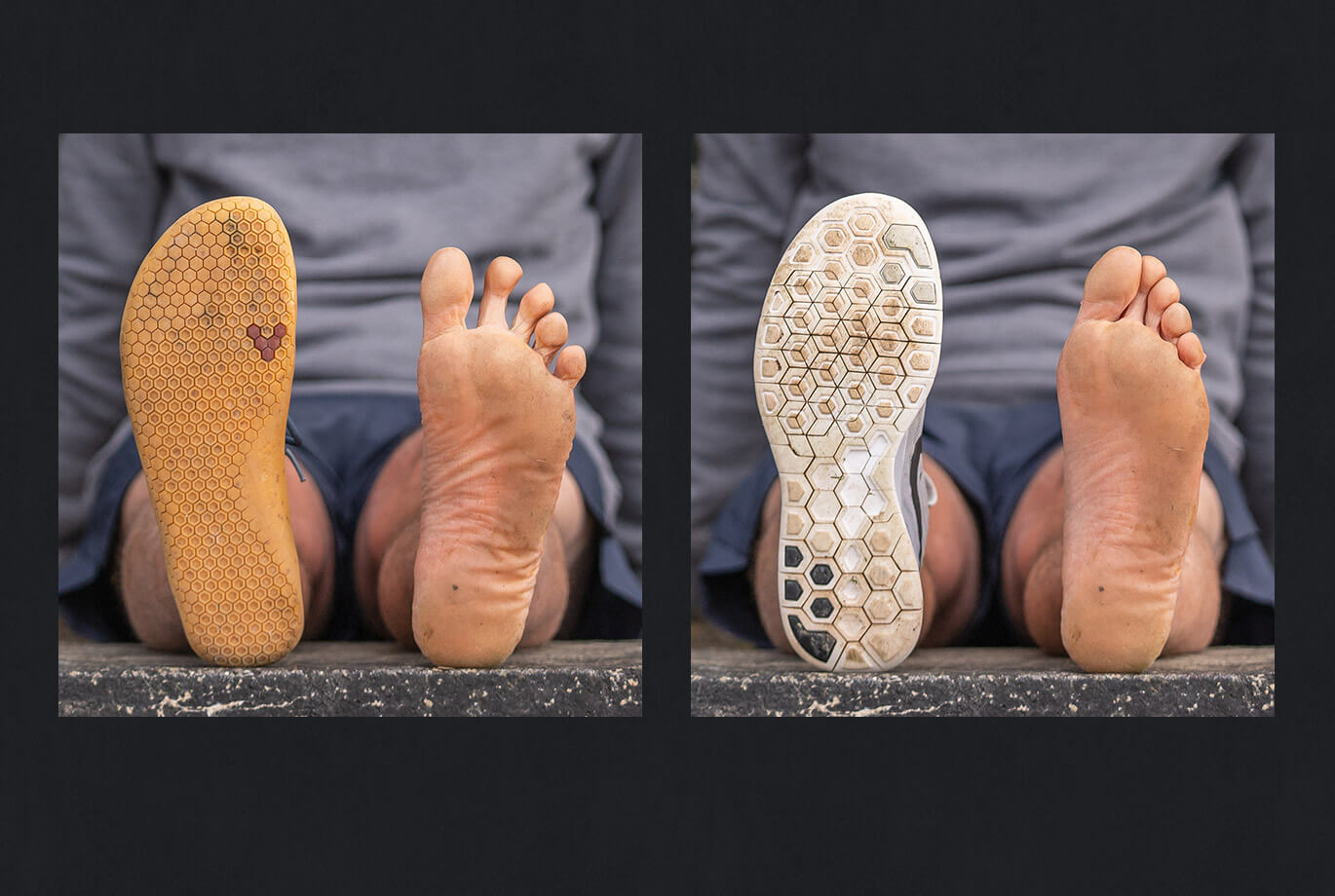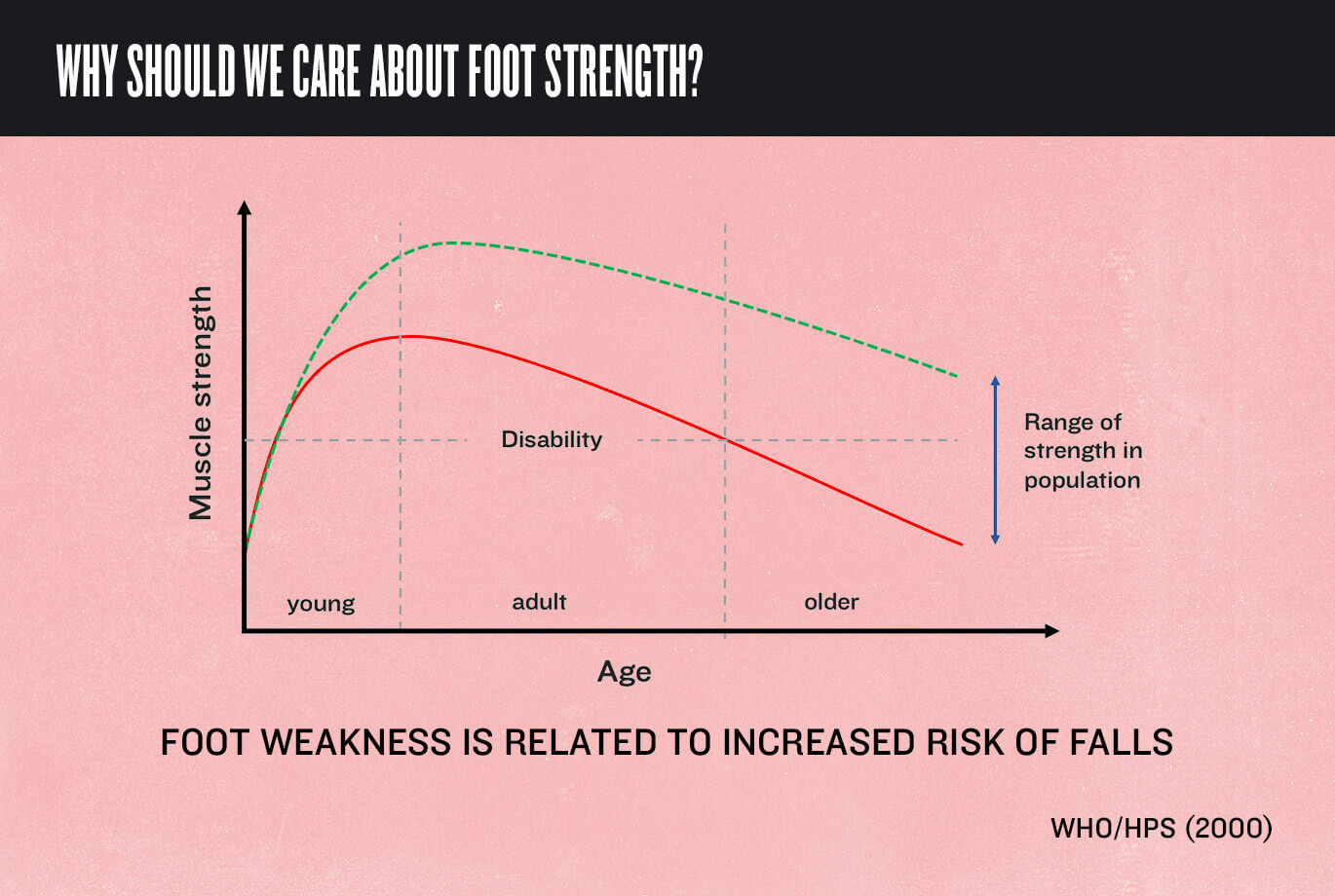We were both stunned and inspired by Dr Kris D’Aout and PhD student Rory Curtis’ recent research showing that wearing Vivobarefoot for 6 months improved foot strength by a whopping 60%. This is in on top of research by D’Aout and Dr Tomasz Cudejko showing that balance and physical function are immediately improved by wearing Vivobarefoot, even in those who have suffered falls.
Isn’t it crazy our feet get significantly stronger, and balance improves, simply by wearing footwear which does nothing to interfere with the foots' natural ability? Where have the innovations of billion-dollar athletic brands got us if, by going back to barefoot and not interfering with anything, we our feet get stronger, and we actually improve our balance and mobility?


Most of our feet are deformed by pre-school age; 85% from a study in Japan, 76% from Austria, and 600,000 forefoot surgeries are performed in USA every year because of shoes, informs us of the prevalence of this epidemic. 80% of women have some sort of foot deformity. Bunions are not hereditary. Most adults experience foot pain. Knee osteoarthritis has doubled since the invention of cushioned footwear 50 years ago. Back pain is more prevalent than ever.
2 million years of evolution created the perfect foot, and almost all (99%) of us are born with the blueprints for perfect feet. A few hundred years of narrow toe boxes, heels, and 50 years of cushioning has not changed those blueprints. Yet our modern lives, with less need to move in order to survive, as well as cushioned supportive restrictive shoes, have led us to a foot and health epidemic.
As for the fact we love cushioning underfoot, think for a minute. Marketing misleads our understanding of comfort. True comfort has to be healthy. The most comfortable foot is a strong mobile foot which can withstand the things life throws at it. A comforted and cushioned foot is weak and maladapted to life, susceptible to injury and pathology. therefore, is it really comfortable to wear a ‘comfortable’ shoe? Does it really make sense to walk on hard surfaces in soft wobbly shoes? Cushioned shoes weaken our feet, making us more injury-prone in the first place, and encourage the running patterns that increase impact forces and make injury more likely. Running injuries may be more about how we move, than what’s underfoot.


The biggest, arguably only influences on the form and function of our feet are the shoes we wear and how we move. It is a fact, the shoes we wear affect how we move! Feet are highly capable biomechanical marvels when they are allowed to develop and move freely. Feet are the major sensory organ of the human locomotion system. Proprioception, often called our 6th sense, is our ability to sense our position and movement, relies on sensory feedback from our feet. 150 years of science has warned against bad shoes and promoted that barefoot people have the healthiest feet.
Science shows that by reconnecting feet to the ground and body, feet strengthen and balance improves. We also have a greater opportunity to improve our movement skill, and with progressive adaptation that builds up slowly, move injury free for life -- just as nature intended.
Think of your foot health as a strength and balance pension; it’s never too early to invest, and you’ll be thankful for it later! To get started, simply ditch your shoes.


